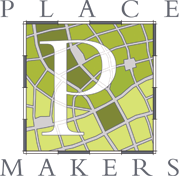A Placemaking Journal
Climate Change: Making the most of failure
Though it surely happens in sports at all levels, there’s one phenomenon that’s particularly common in youth sports: A game in which you’re so outmatched, so fundamentally inferior to your opponent that the outcome, minus Divine or supernatural intervention, is essentially guaranteed.
You’re going to lose.
... Continue Reading



Suburban Remix: A New Generation of Walkable Development
In 2001, a new book came out with my name (and those of two colleagues) on the cover. It was a book of case studies of smart-growth alternatives to suburban sprawl, divided into three categories: urban development, suburban development, and conservation initiatives. I mention the book here not (well,... Continue Reading
Category Book Reviews
Tags Kaid Benfield



Moving Beyond “Smart Growth” to a More Holistic City Agenda
Originally published almost four years ago and every bit as relevant today.
I have spent most of the last twenty years working on an agenda grounded in, for lack of a better phrase, “smart growth.” That agenda basically holds that our regions must replace suburban sprawl with more compact forms of growth and... Continue Reading



Resolved for 2018: Fewer delusions, more reality-based planning
Okay, so we’re shaking off the shock therapy of 2017 and ready to move on, right?
Let’s start with admitting some of the stuff a lot of us got wrong about challenges and solutions in municipal and regional planning. Such as: Our misplaced overconfidence in the stability of basic institutions, especially those requiring... Continue Reading



CNU 26: Gearing Up
In this week's post, PlaceMaker Susan Henderson offers a deep dive into the instructive charms of Savannah, Georgia.
Click below to launch.
Continue Reading
Category Planning and Design
Tags CNU 26, Susan Henderson



Livable Places Connect People
Tonight I was thinking back through all of the places I've lived, correlating the physical form of the places to the size of my circle of friends. While completely an anecdote of a sample size of one, I noticed that when I lived in more walkable locations, I certainly had a much more engaged urban tribe. Just out of university,... Continue Reading
Category Experience
Tags Hazel Borys, social capital



Year End Reflections: Gratitude for Livable Places
As the year draws to a close, reflection is an important rite of passage: celebrating, mourning, learning, and letting go. 2017 has not been the sort of year in which gratitude is the obvious emotion of choice on many levels. Yet the act of searching for what is beneficial, transformative, and noteworthy helps process... Continue Reading
Category Economic Development, Environment | Sustainability, Health, Planning and Design, Public Policy, Resilience
Tags Hazel Borys, Resilience



The Sidewalk to Hell is Paved with Good Intentions
Sometimes all the right people seem to be at the table, all singing from similar hymnals, and all seemingly focused on transcending growth-as-usual and yet, still, the results fall flat.
Today we look at one of those times.
The scenario
Imagine this:
A site area that retailers describe as a “100% corner.”... Continue Reading
Tags mixed-use, Scott Doyon



Storytelling Part II: Getting to Getting Things Done
First a review:
In a post last month, I made a pitch for organizing community storytelling around getting stuff done. I acknowledged how hard it is to do that in the current political environment, which is increasingly an arena of competing tribal identities and mutually exclusive convictions:
A community that has... Continue Reading
Category Community Development, Planning and Design, Public Engagement, Public Policy, Theory and Practice
Tags Ben Brown, storytelling



Places that Pay: Benefits of placemaking v2
“Reconciliation is making peace with reality, our ideals, and the gap in between,” via Her Honour, Janice C. Filmon, Lieutenant Governor of Manitoba. Much of our work here at PlaceMakers is about redirecting the trajectory of where we are headed with the targets needed to ensure the wellness of our environment, equity,... Continue Reading













